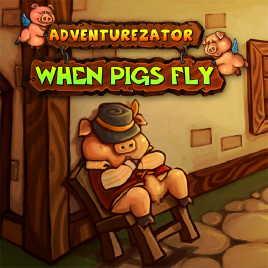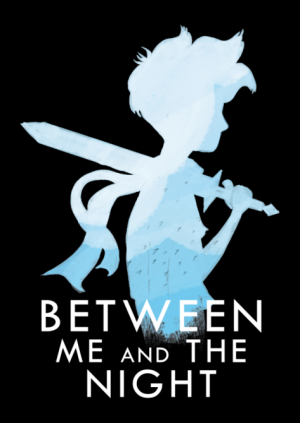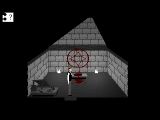Review for Samorost 3

Amanita Design's projects have always had an endearingly quirky personality all their own. Starting with the original Samorost (Czech for "maverick") and progressing through Machinarium and Botanicula, they've all been abundantly beautiful and charming, leaving traditional adventure genre mainstays such as logic, plot and dialogue by the wayside. Instead, they've substituted wide-eyed exploration and the simple pleasure of playing with the world around you, making a real case for games as art and not just entertainment. It's a formula proven to work, and with Samorost 3 they've stuck with it. Though it's been a decade since Samorost 2, the new game thrusts players right back into the little gnome protagonist's offbeat, abundantly organic world as if no time had passed. Except this time we get a full-length adventure, with all modern conveniences. The obsessively goal-oriented gamer should probably stay away, but everyone else can look forward to one of the most adorable games ever made.
For those who need a quick recap, the Samorost games star a little fellow who looks like he's wearing white pyjamas and a wee willie winkie hat. I think of him as Sammy the gnome, but he's never actually named. He lives on a gnarled-looking world that looks to be equal parts rock and wood, in a house with a huge telescope on top. So far, he's stopped a planetoid (for want of a better word) from crashing into his world, and rescued his dog from thieving aliens. This time around, things are a bit more complicated, with enough backstory to fill two in-game comic books, the first of which is waiting for you on your bedside table.
Reading a bit like a children's tale from the Twilight Zone, the story tells of a giant space squid that crashes through into our dimension, devouring everything in its path. A crack team of monks with magic trumpets use the instruments to breathe life into a black ball, then find an engineer to build them a giant robot and implant the ball into its head. Springing up, the robot picks up a great big sword, flies off into space and chops the squid up into little pieces, saving the universe. Hurrah! Of course, such a powerful weapon can't just be left lying around, so the monks remove the ball for safekeeping and leave the rest of the robot on a different planet.
What has all this got to do with little Sammy, you ask? Well, one day as he’s taking a nap one of those magic trumpets crash-lands in the garden, shattering the peace and setting the dog barking. As it turns out, he can use it to either listen to things or play it to invoke the spirits of plants and animals. That will turn out to be very important later, but at first it's just a fun toy to play with. What really gets him excited is looking through his giant telescope and seeing a beautiful green world just sitting there among the stars – a world he literally dreams of visiting, and which looks suspiciously like the one the monks live on. Unfortunately, having lost his tin-can spaceship escaping those aliens earlier, he'll need to build a new one before he can set off on his latest adventure.
Written down, that all sounds rather random and bizarre, but such is the strength of Amanita's storytelling that in reality it's filled with boundless charm and childish wonder. Of course those monks and their giant robot return to figure in the story later on, and obviously it falls to you to ultimately save the day. But for now, it's enough to just get on with building your spaceship and delighting in the worlds you encounter along the way to the promised land. Not that they’re exactly “worlds” in any conventional sense. These aren't your basic rocky balls in space. (Well, okay, a couple are but you don't spend much time there.) Rather, it feels like everything's built on a micro scale, with each new location being just another piece of detritus floating through the void that life has landed on and colonised. There are termites nearly as big as you are, and winged insects that are far bigger. It's as if people (and some animals) got shrunk down really small and went to live alongside ants. It's probably not worth thinking about too hard: this is a universe driven by whimsy and invention, not cold, hard logic.
Where the previous games only had room for one or two new worlds to visit, here you're presented with a cornucopia of diverse environments. You see, the ship you build doesn't generate an awful lot of thrust, so you have to slingshot from place to place along the way. And as they say, the adventure is not about the destination but the journey. You'll hop from a lush world full of amber grass and enormous bugs to a space whale, a Mars-like desert with totem poles, and an enormous piece of driftwood with termites, parrots and a lugubrious fellow who needs some special ingredients for his tea.
Graphically, the Samorost games have always been beautiful and distinctive, and this one is no exception. Presented in full HD, everything looks at once both photorealistic and hand-crafted. There are verdant grasslands that appear just a bit hairy, gnarled trees full of insect holes, and slippery-looking rocks by quiet pools, but among them are ramshackle human constructions and organic machines. There is technology, but it's all very basic and beaten-up. This is a world where you launch into space in a ship built from a plant's seed pod, a cut-up bottle and a metal bath. The overriding impression everywhere you go is of teeming life, with plants, trees and grass growing everywhere, and rabbits, beetles, butterflies and all manner of other creatures in the background. Not only that, but all the creatures react to you in some way, even if it's only to fly away at your approach.
Special mention, too, must go to the animation. Not only is every screen filled with critters hopping, skittering and buzzing about the place, but everything you do is beautifully and thoughtfully depicted. For example, when your spacecraft comes in for a landing, the seed-pod base crinkles on impact, then slowly pumps back up again before you swing open the canopy and jump out. Or when you're carrying around something heavy, you're bent forward with a heavy-footed walk and you can practically feel the relief when you get to put it down. Even when you're just walking around, the gnome doesn't just walk the same way everywhere; he skips across stones, hauls himself up onto ledges, and crawls into holes. A real highlight is when a couple of sound puzzles come together and he takes time to dance around to the melody and enjoy the moment.
The soundscape is another high point. The organic nature of the environments is emphasised by putting the various creature noises, wind whistling, and other effects front and centre initially, while a gentle ambient score builds behind it. Each new world starts out very calm and Zen-like, but slowly builds in tempo and volume as you progress, helping create a growing excitement. Several worlds contain music-related puzzles, too – not in the sense of having to recognise and repeat a melody (though that does pop up as an optional challenge), but in the happy tunes that play naturally when putting the pieces in place. Even the achievements screen allows you to create your own songs by associating a different riff with each achievement and letting you click on the ones you want to combine.
With everything communicated through animations rather than words, there's no voice work as such. However, the handful of characters you meet do chatter away in a nonsense language as they're speaking to you, helping to get some of the emotion across. Sammy also lets out delighted yelps when something good happens, as well as wondering gasps and nervous sighs at times.
The Flash-based interface of the first two games was about as minimal as it gets: just click on things to interact with them. There was no real inventory, or even an ability to walk where you wanted. This time, things are a bit more adventure-standard: there's a rudimentary inventory at the top right of the screen, and you can walk anywhere the cursor indicates with walking feet. You still won't have to worry about inventory management, however. You rarely have more than a couple of objects at a time, one of which is your trumpet, and there's no item combination or any of that fancy stuff. The cursor changes to a hand over things you can interact with or an arrow over exits. Objects you can listen to are highlighted by a series of animated concentric rings, comic-book style, but often only when you're quite nearby. Presumably that's to emphasise the idea that you have to be close in order to realise there's anything to listen to, but I never felt in danger of missing anything.
When the cursor isn't hovered over anything in particular, you can click and drag the view around (showing off some lovely parallax effects), or use the scroll wheel to zoom in and out. (The game also zooms in automatically at dramatic moments.) A star icon in the upper right corner brings allows you to save, load, read the books you've found, get a hint, or change the settings. Two oddities here are that the option to quit is hidden in the settings menu, and there's no way to start a new game in the traditional way. Instead, you're given a permanent saved game from right at the beginning to reload.
The hint system is presented in the form of a book, locked with a puzzle consisting of three concentric rings that you have to rotate into position. It's not a hard puzzle (though it does give you a new random instance each time), but it does serve to ensure you're serious about needing a clue. That's just as well, because the help you get is not so much a hint as a double-page cartoon spread that lays out the complete solution to everything in the current scene, including some of the optional puzzles. It's not somewhere you want to go unless you're really and truly stuck.
The Samorost games have always been more about the joy of exploration and experimentation than telling a tightly-plotted story or planning ahead, and this latest entry is no different. Most of the time, you're trying things hoping for something interesting to happen rather than because it's a calculated step towards solving one of your problems. In fact, pretty much everything you achieve feels like a happy accident. Even right at the start, you're given no directions what to do: it's up to you to decide to look through your telescope, and even then you have to go to bed before you'll dream about the planet you saw and decide you have to find a way to get there. For anyone who loves to just play around and just go with the flow, it can be a bewitching experience.
Every screen is filled with things to fiddle with, many of them unrelated to your primary objectives. You can go play with your dog, ride a mountain goat or stack cockroaches on top of each other. Or you might blow spiral smoke from a hookah, listen to the song of the queen termite or annoy the bathing monkeys. The list is seemingly endless. I thought I took the scenic route, but I still only managed a bit less than half the achievements available. As much as I found, there's clearly plenty more to see, and it's telling that even after the credits roll the game doesn't actually end. You can fly back to any of the places you visited (some of which have changed a bit since you last saw them) and poke around some more, or help the monks out with an optional epilogue. Or just go home and play with your dog again.
Even when you do seemingly have a clear goal, such as when your spaceship is rooted in place by a tangled vine, trying to find a sharp knife – or weedkiller, or blowtorch, or any of the usual adventure game solutions to the problem – won't help you at all. Instead, you have to accept that you're stuck there for a bit and go (quite literally) smell the flowers. There's a sad-looking fellow nearby who needs to find what looks like a dumpy coconut with a face, or possibly some kind of cheeky animated mandrake root. Maybe that ties into your dilemma somehow? Again, though, don't go looking for that coconut, because you won't find any clues to its whereabouts. Instead, you have to wander around, play with the birds and the bees (all living on a piece of termite-infested driftwood) and wait and see what happens. Oh, and there's quite a tricky organic termite maze machine in there to navigate too. It's only when you finally have the solution in your hands that you realise what any of it was actually for.
In other circumstances, this could come across as sloppy or disorganised, but the whimsical situations and sheer abundant joy of experiencing it all mean you just don't care. You're encouraged to just play around, see what happens, and trust that things will work out somehow. Even if it doesn't get you any further forward, at least it's always fun to watch. It's probably no accident that your little gnome is small, child-sized and looks like he's having as much wide-eyed fun with it all as you are. In fact, when you hit a small section towards the end that's more conventionally plot-driven, it's almost a disappointment. Suddenly, you know where to go and what to do and it almost feels dull by comparison!
I also didn't mind that very few of the puzzles are properly integrated with the world around them – or indeed, anything at all. For example, at one point you want to open up a crashed space probe, so you blow your trumpet at it. That pops up a bunch of different-coloured spirit bubbles that you can combine in various ways. What do those bubbles have to do with anything? Nothing that I can see. But there needed to be a puzzle there, and solving it is fun, so why worry? Another time you run across a tree with three dials carved into it, except you can't turn the dials directly. Solving that one has you playing with nearby reeds and beatboxing frogs and none of it makes any real-world sense. And yet, when you see the pieces clicking into place to the accompaniment of the frogs' suddenly-harmonious melody, it's a glorious feeling.
That said, the gameplay isn't without its occasional frustrations. Most of the time, you just click on things to interact with them, but sometimes you have to drag them around instead. I sometimes got stuck before realising that objects could be dragged. On one occasion, I thought taking a seed from a flower would just require a click and when that didn't work I went looking for more complicated solutions before realising the seed had to be dragged in a plucking action instead. Another minor complaint is that some puzzles rely on you repeating the same actions several times and spotting how the results each time are slightly different. There were a couple of occasions where I was repeating an action out of frustration (and giving my brain time to come up with a better plan) only to have it suddenly work. Near the end, there's a puzzle that expects you to do the same thing three times, but also puts you through a longish sequence to set up each new attempt. By the third time, it was only the fact that I'd learned to repeat things previously that motivated me to go through it all again.
One last issue is that there's no quick travel or any ability to skip already-solved puzzles: if you want to get from one place to another you have repeat all the steps each time. One particularly painful example of this involved a plant that looked like a shower with a removable shower-head. Pumping water through it meant going underground, navigating a room full of vines and solving a puzzle to get the water flowing. Except after all that, I belatedly realised I'd forgotten to fit the head to the flower first. Which meant undoing the water puzzle so I could leave the room, navigating the vines again, going back to the flower, fitting the head and then repeating everything all over again. Any ability to shortcut that process would have been very welcome.
These are just minor wrinkles, though, in a game that continually put a smile on my face throughout its 6-8 hours of playtime. (To give you an idea how much time you'll spend poking around, you could probably get through it in a couple of hours if you knew what you were doing.) Sammy the gnome just wants to explore, take in the sights and help those he meets along the way, and with such diverse, unusual and beautiful worlds to traverse, it's hard not to get sucked in. Yes, you could grump that it's a journey filled with happy accidents rather than careful plans and solid reasoning, but in the end that's part of its unique attraction. It was never trying to be a traditional puzzle adventure, just trying to make you feel happy and lead you to some magical moments along the way. For anyone with even a hint of their inner child left to nourish, Samorost 3 comes heartily recommended.































